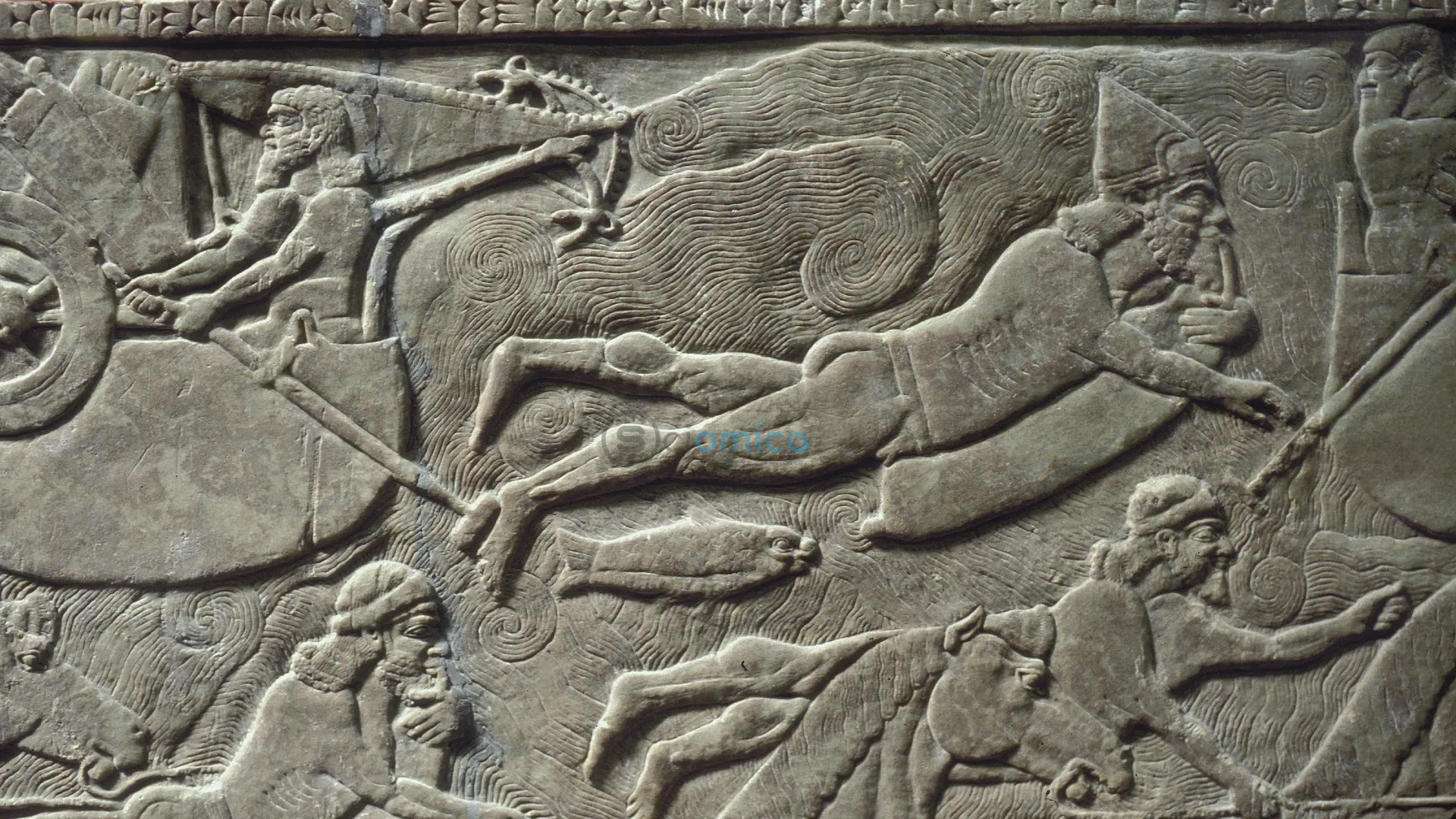
An extraordinary carved panel retrieved from the ruins of the ancient Assyrian city of Nimrud, located near modern-day Mosul, Iraq, offers fascinating insights into military practices of the Assyrian Empire. The relief depicts soldiers swimming across a river, using inflatable goat skins as primitive flotation devices, a testament to the ingenuity of ancient warfare strategies.
Known as the “Assyrian Swimmers,” this gypsum relief scene hails from the Royal Palace of Nimrud, constructed around 865 B.C. under the reign of King Ashurnasirpal II. The palace, situated along the banks of the Tigris River, was richly adorned with detailed carvings that illustrated not just military campaigns but also royal rituals and hunting expeditions.
The carved panel is part of a larger collection excavated in the 1840s from the palace, which served as a central hub for Assyrian administration and culture. The intricate designs on the panel are significant; they vividly portray various soldiers as they tackle the challenges posed by the river. Some cavalry soldiers are seen leading their horses through the water, while others are fully engaged in swimming. One soldier even appears to be maneuvering a small boat alongside colleagues who are utilizing the distinctive goat-skin bags for support as they navigate the currents.
A cuneiform inscription at the top of the panel further enriches our understanding of the artwork, tracing the king’s lineage and detailing his notable accomplishments. This aspect highlights the blend of artistry and record-keeping that characterized Assyrian culture, a practice unusual for its time.
The use of animal skin floats, as depicted in this relief, sheds light on the practical problems soldiers faced during military operations. These flotation devices, which could be constructed from goat or pig skin, were instrumental in keeping soldiers’ weapons dry and allowing them to approach enemies stealthily, facilitating tactical advantages during river crossings.
King Ashurnasirpal II, who ascended to the throne in the 9th century B.C., is frequently lauded for both his military prowess and innovative strategies, including the use of these goat-skin floats. His reign marked a period of significant expansion for the Assyrian Empire, showcasing highly developed military strategies that combined intimidation with strategic adaptability.
While the notion of ancient scuba gear is certainly an intriguing concept, the practicality of the goat skin as a flotation aid reveals how the Assyrians adapted to their environment and engineered tools—even within a seemingly simple invention—that contributed to their military dominance in Mesopotamia.
This remarkable panel encapsulates a moment from an era long past, reminding us of the intricate interplay between art, history, and technology. It serves as a poignant reminder of how innovations—no matter how humble—can significantly influence the course of history. The Assyrian Empire, sustained by such ingenuity, thrived for centuries, ultimately succumbing around 600 B.C. after a long period of decline.
In summary, the Assyrian swimmers depicted in this remarkable relief not only provide a glimpse into ancient military practices but also highlight the culture’s sophisticated approach to warfare. Such artifacts continue to ignite the imagination of both scholars and the general public, bridging ancient history with contemporary intrigue and discovery.






